HOME
"The Ships"
featuring
- M/S "BORIBANA" -
- a typical dry cargo ship
from the sixties -
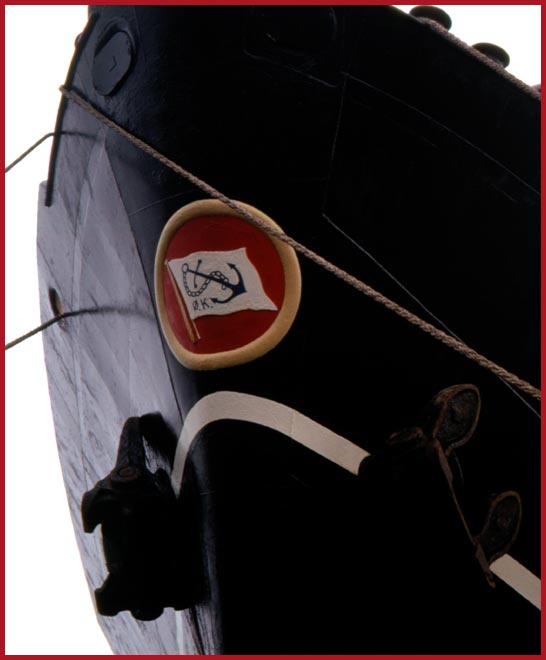
M/S "Boribana"
- the bow,- with the logo of
the East Asiatic Company -
(Photography by Karsten Petersen)
--------------------------------------------------------------------------------------------------
Builders: B&W Ship Yard,
Copenhagen
Delivered: 1961
Length,- overall: 151,4 m
Breadth: 19,4 m
Deadweight: 10300 tons
Propulsion: A B&W diesel engine, 10.000 bhp
Speed: 17,5 knots
------------------------------------------------------------------------------------------------
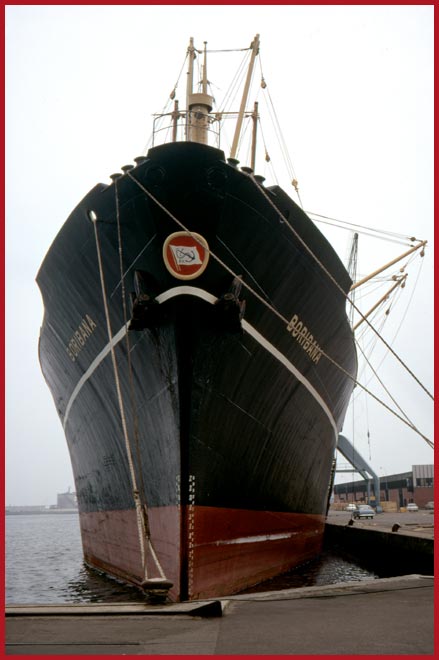
M/S "Boribana"
- bow -
(Photography by Karsten Petersen)
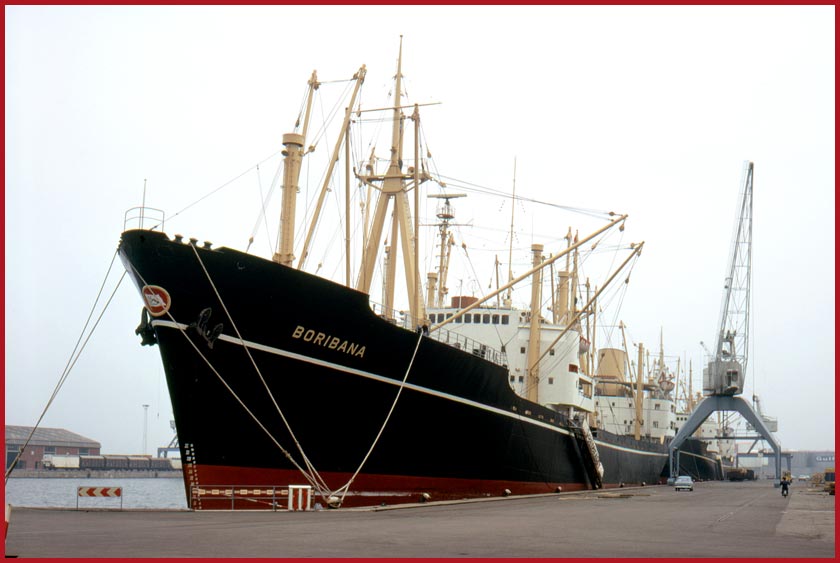
M/S "Boribana"
- in Aarhus, -Denmark,
1969 -, preparing for the Far East -
(Photography by Karsten Petersen)
"BORIBANA" is the next
development in cargo ships.
The main difference from M/S
"SAMOA" from the fifties is,- that the ship owners now had started to think
in more economical ways.
Why use the mid section of
the ship for a huge engine room???? The mid section is the best cargo
space you have,- and if you could move the engine room aft,- where the
hull is narrow and sharp-, then you could carry a lot more cargo.
And an extra bonus is, that
you do not need the long "tunnel" for the propeller shaft any longer,-
and thereby you also saved cargo space in the aft cargo holds.
However,- it was believed,
that the duty officers could not keep a proper lookout, if also the bridge
was moved aft,- like you see it on present days ships.
Therefore the bridge,- as well
as the accommodation for the deck officers-, was kept in its traditional
place,- mid ships -, on this class of ships.
However,- it was soon discovered,
that it was perfectly OK also to have the bridge aft, and after a very
short period with split superstructures,- this arrangement was abandoned
on later new buildings, where everything was moved aft.
That split arrangement of the
superstructure spoiled the harmony and beauty of the ship,- although
the hull lines were still beautiful,- with rounded stern, raised bow, and
a beautiful deck sheer,- just like on the older ships.
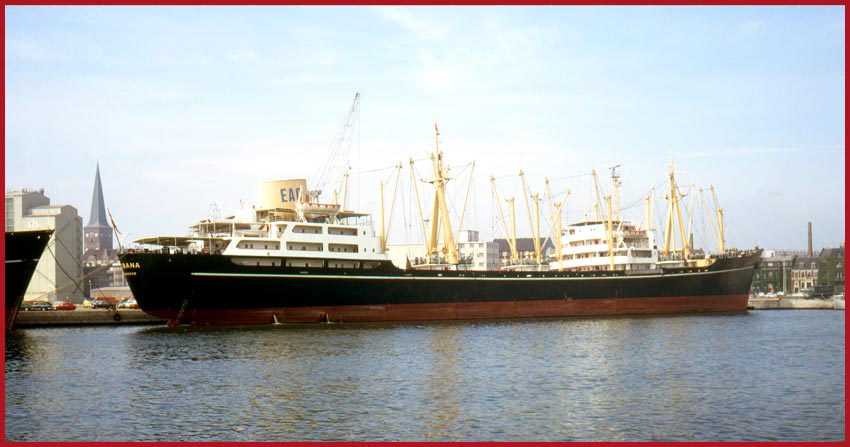
M/S "Boribana"
-
on this picture, the unusual split superstructure is clearly seen -
(Photography by Karsten Petersen)
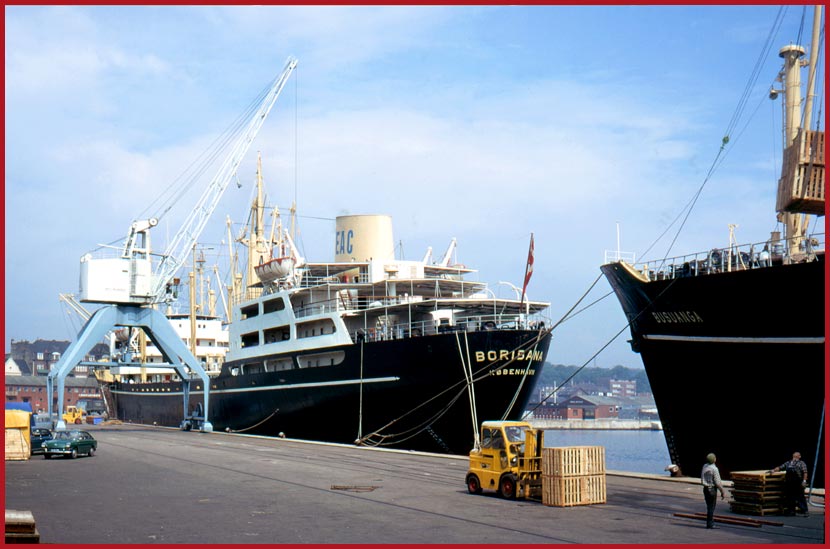
M/S "Boribana"
- here loading for the Far
East in Aarhus, Denmark, - with sister ship "Busuanga" behind -
(Photography by karsten Petersen)
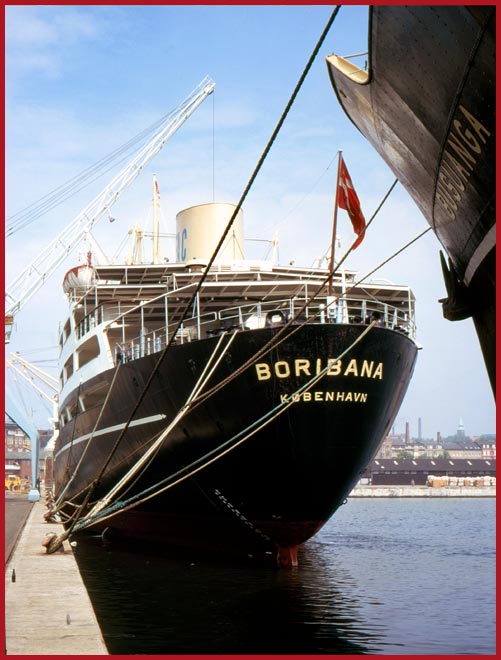
M/S "Boribana"
- with sister ship "Busuanga"
in Aarhus, Denmark -
(Photography by Karsten Petersen)
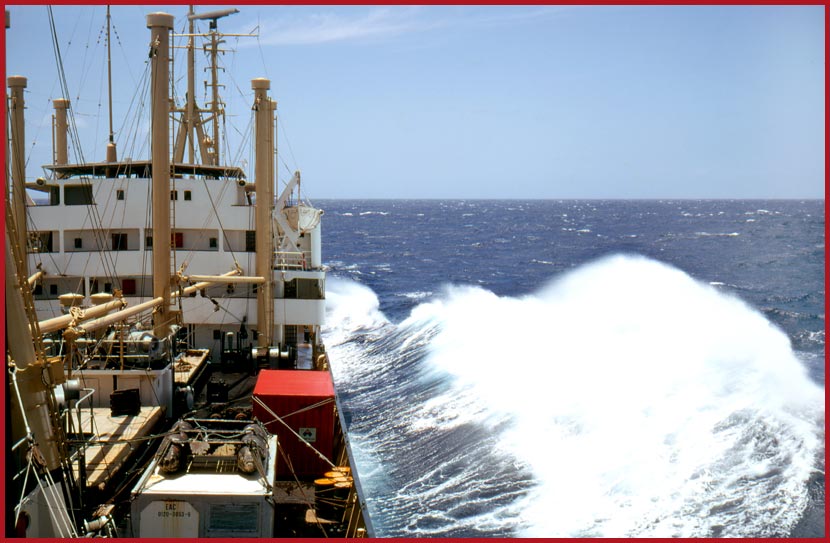
M/S "Boribana"
- finally at sea, - in the
South Atlantic -, bound for the Far East -
(Photography by Karsten Petersen)
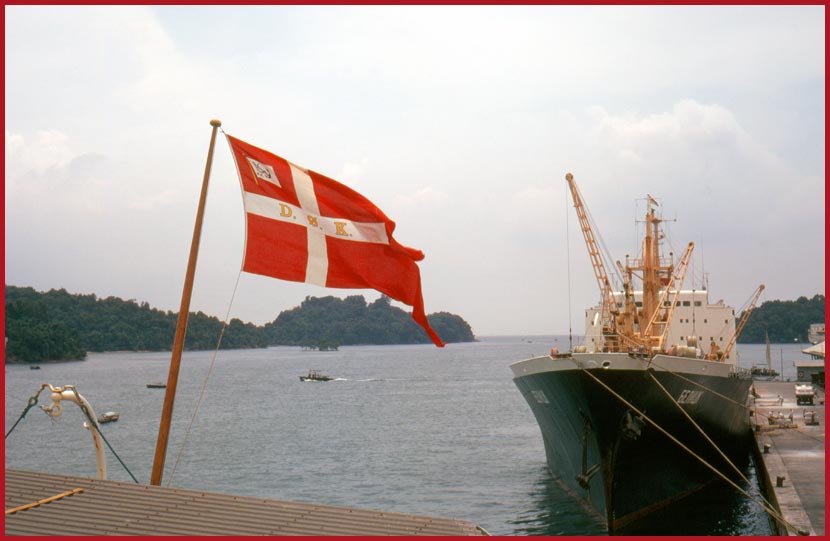
M/S "Boribana"
- the house flag of the East
asiatic Company -
(In port Klang, - which I believe
-, was known as Port Swettenham in those days -)
(Photography by Karsten Petersen)
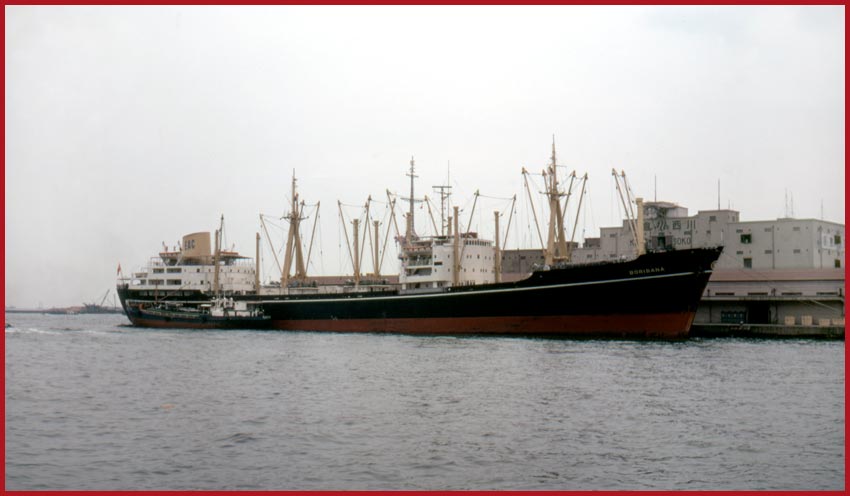
M/S "Boribana"
- in Japan -
(Photography by Karsten Petersen)
---------------------------------------------------------------------------------------------------------------
The "Marpessa" disaster
- the explosion and sinking
of the biggest ship ever -
You cannot possibly be a seagoing
man for 37 years without experiencing disasters of some sort, - mainly
storms
-, but also fire, explosions, collisions, grounding or whatever dangers
you might encounter when you navigate the great oceans.
On "Boribana" we witnessed such
a disaster, - the explosion and eventual sinking of the brand new Shell
super tanker "Marpessa" of 209.996 tons.
"Marpessa" was on her second
voyage to the Middle East to pick up a new cargo, when during tank cleaning
operation an explosion suddenly ripped up one of the center tanks, killing
two crew members and injuring many more - - -
This was on December 12th.
1969 off Dakar while "Boribana" was homeward bound in the opposite direction
from her round trip to the Far East.
When the distress message from
the "Marpessa" was received, we immediately altered course towards the
crippled super tanker, but since several other ships were already there,
our assistance was not required - - -
The "Marpessa" crew did of course
try to put out the fire, but since the fire lines on deck was damaged,
they did not succeed.
The "Marpessa" started to take
in water, and as she slowly flooded, bulkhead after bulkhead gave way under
the pressure, and on December 15th. 1969 she finally sank, and became the
biggest ship that had ever gone to the bottom of the sea.
I took a few pics of this event
- - - - - -
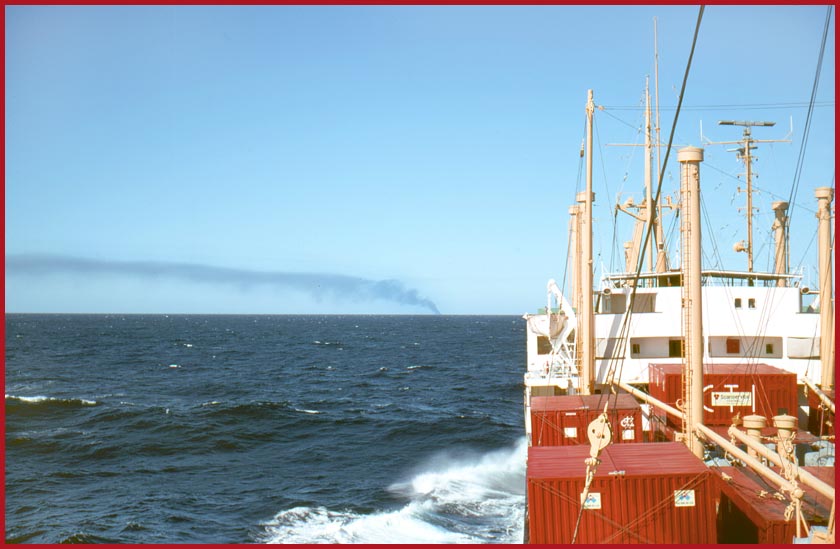
M/S "Boribana"
- racing to the rescue
- , while smoke from the burning "Marpessa" clearly shows in the
horizon -
(Photography by Karsten Petersen)
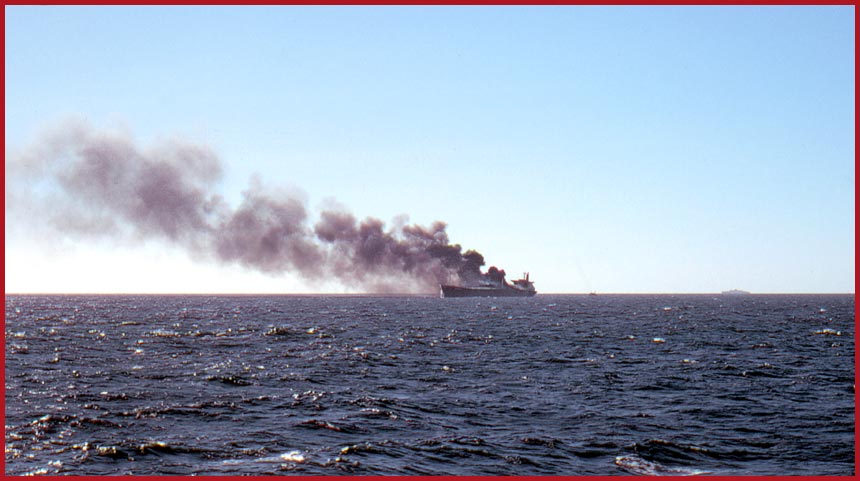
Shell tanker "Marpessa"
- "Marpessa" on fire before
she sank -
(Photography by Karsten Petersen)
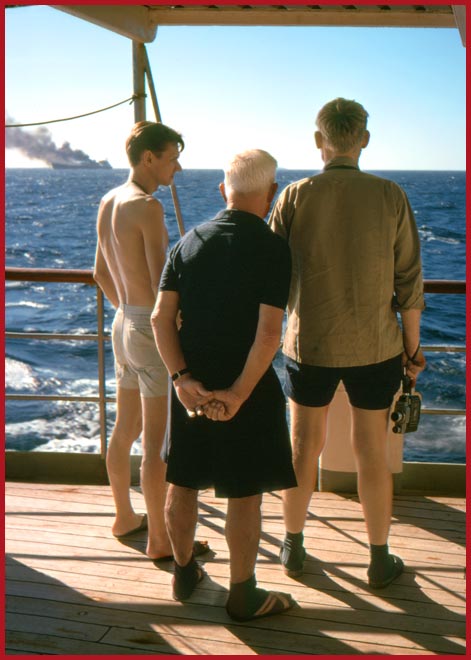
M/S "Boribana"
- watching the "Marpessa" die
-
Left to right: 1st. Engineer
Henning Lisby, the Chief Engineer Just Petersen and Electrician Jørgen
Friis -
(Photography by Karsten Petersen)
--------------------------------------------------------------------------------------------------
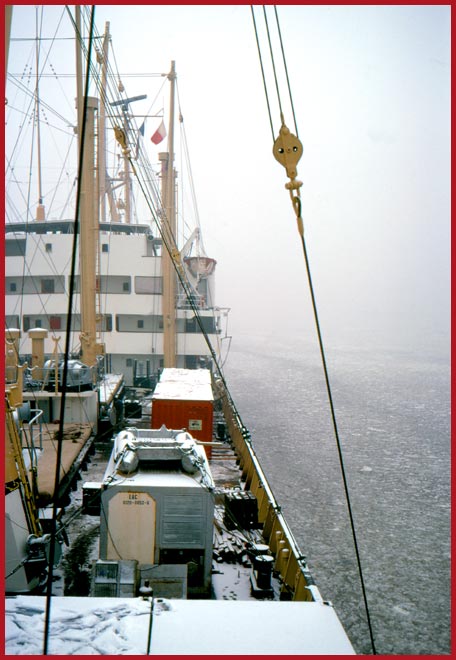
M/S "Boribana"
- coming home to winter after
a great trip Far East round trip, - take note of fog and ice in the water
-
(Photography by Karsten Petersen)
The Engine room -
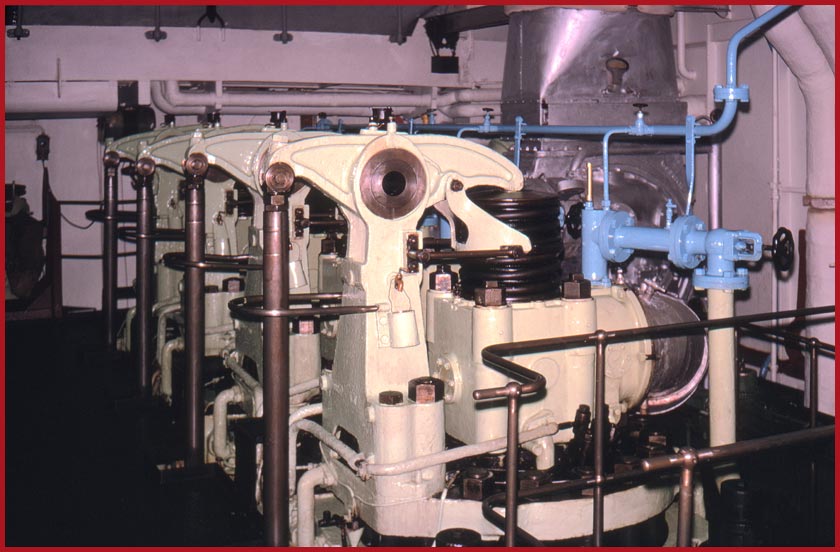
M/S "Boribana"
- the engine top -
(Photography by Karsten Petersen)
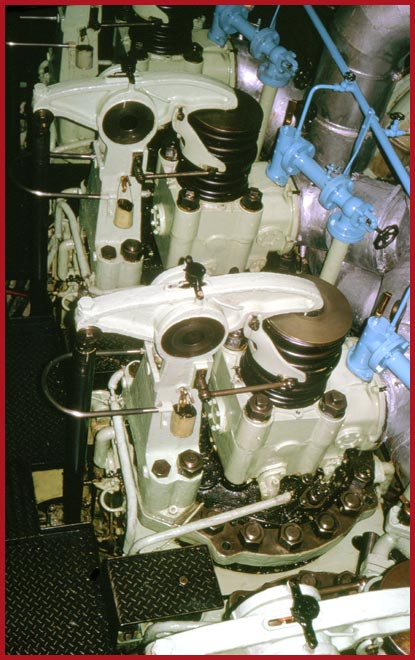
M/S "Boribana"
- the engine top with rocker
arms and exhaust valves -
(Photography by Karsten Petersen)
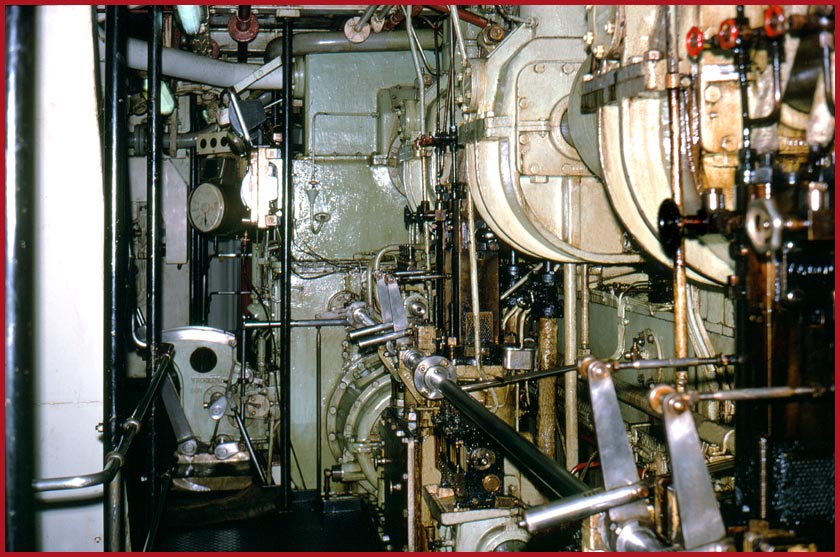
M/S "Boribana"
- the intermediate platform
with fuel rack and fuel pumps -and maneuver stand in the background -
(Photography by karsten Petersen)
---------------------------------------------------------------------------------------------------
Click HERE
for part two - A "Boribana" trip from 1971 - 1972
NOTE: You can see
much more about "The Finest Shipping Company in the World", - the
"East Asiatic Company" of Copenhagen -, at following address: www.snesejler.dk
where many old EAC sailors like myself have contributed with pictures,
stories and memories. A truly GREAT site - - -
Back to "SAMOA"
Back to "My
Ships"
Back to "The
Ships"
CLick HERE for "JUTLANDIA"
(Part 1, 2 and 3)
Updated: June 13th.2003
July 2nd.2003
Sept.24.2005
Oct.02.2006















